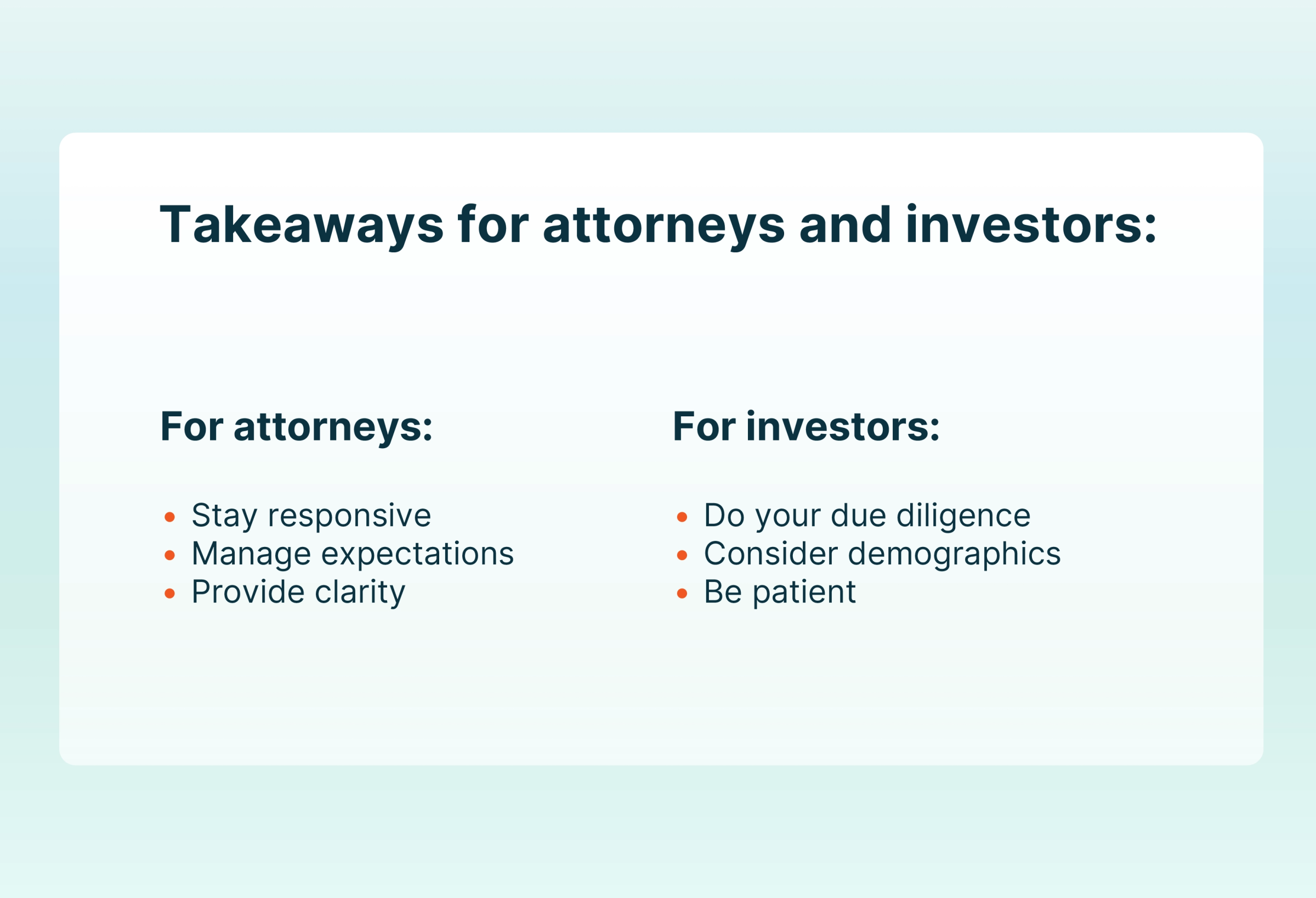“In 2024, data suggests that about $4 billion was raised through EB-5 investment. That’s $4 billion cash, invested into the U.S. market to create 10 jobs per investor—and the economic impact is much higher.”
That’s how immigration attorney Divij Kishore frames the importance of the EB-5 visa program at the midpoint of 2025. The EB-5 remains one of the most significant investor visa options available, generating capital, jobs, and long-term residency opportunities. Yet alongside its continued growth, a new proposal—the Trump Gold Card—has sparked debate about the future of investment-based immigration. Would a $5 million “gold visa card” without job-creation requirements enhance the system, or undermine the decades-old EB-5 framework?
In a recent episode of Immigration Uncovered, host James Pittman, immigration law expert and co-founder of 8am™ DocketWise, sat down with Kishore, founder of Flagship Law, to explore the real opportunities, risks, and uncertainties surrounding the EB-5 and Trump Gold Card. Below are key highlights from the discussion.
The current state of the EB-5 program
By mid-2025, interest in the EB-5 program had surged. According to Kishore, his practice is seeing “a lot of follow-up and interest coming in from clients who’ve, in some cases, gotten spooked with the overall rhetoric around investment-based immigration.” Despite political headwinds, the program remains a viable option for high-net-worth individuals who want lawful permanent residence.
The EB-5 visa requirements were adjusted under the 2022 EB-5 Reform and Integrity Act and currently stand at $800,000 for investments in Targeted Employment Areas (TEAs) and $1.05 million elsewhere. The program is reauthorized through September 2027, offering some measure of stability.
But that stability comes with strings attached. Increased oversight and stricter audits have become the norm. “There’s been a 200% increase in some filing fees,” Kishore notes. “There’s a lot more scrutiny, a lot more site visits. But I don’t necessarily see that as a bad thing.” For many investors, heightened regulation has actually increased confidence in the EB-5 system by discouraging fraud and overpromising by regional centers.
Investor demographics: Beyond billionaires
A common misconception is that EB-5 participants are ultra-wealthy foreigners who have never lived in the U.S. In reality, many investors are already here—working professionals with careers in tech, STEM, or other high-demand fields.
“These are individuals who have been listed as inventors on patents, authored research in tier-one journals, and worked in big tech,” Kishore explains. “They’ve had long careers in the U.S. and have the funds now to pursue a different green card pathway.”
For these clients, the EB-5 investor visa is not just about opportunity—it’s about security. With other employment-based categories backlogged or stalled, EB-5 represents a clear, if costly, path to permanent residency. Still, EB-5 visa processing times can stretch to four or five years, particularly for applicants from high-demand countries like China and India.
Regulatory changes and reauthorization
The EB-5 program has historically faced political battles. During Trump’s first term, there were periods when the program was not reauthorized, creating panic among investors and regional centers. Today, although authorized through 2027, uncertainty remains.
Kishore cautions that reauthorization deadlines could become bargaining chips in broader political debates. “We’ve already started to see that happen a few times since the administration changed in January,” he says. That kind of uncertainty underscores the importance of proactive planning for both investors and attorneys.
The Trump Gold Card proposal
Perhaps the most provocative development is the proposed Trump Gold Card. Marketed as a $5 million fast track to permanent residency, the “gold visa card” would exempt investors from job-creation requirements. Reports even suggest that cardholders could receive unprecedented tax perks, including exemption from U.S. taxation on worldwide income.
Kishore is skeptical. “I don’t see how what is being proposed achieves the same objectives as EB-5,” he argues. “Does it really matter that the investment is five times higher if it doesn’t create jobs or spur economic activity?”
From a policy perspective, the Trump Gold Card raises several questions. Would creating a visa tier that exempts ultra-wealthy investors from taxation really serve the U.S. economy, or simply reward wealth without contribution?
Investor appeal and economic reality
Despite skepticism, the Trump Gold Card could appeal to a specific demographic. High-net-worth individuals engaging in so-called “birth tourism” may see it as a convenient way to secure status without entangling themselves in complex job-creation requirements.
As Kishore notes, “If I were someone with that kind of money to throw around, I’d view $5 million as something I could put on my black card—a weekend expense.”
But when viewed against the $36 trillion U.S. national debt, even tens of thousands of $5 million contributions would barely scratch the surface. As Pittman points out in the podcast, the administration has yet to introduce any legislation or tax code amendments to support the proposal. At this stage, the Trump Gold Card remains more political rhetoric than reality.
What lies ahead for EB-5 and the Trump Gold Card
Could the EB-5 and Trump Gold Card coexist? Possibly, but Kishore warns that any executive attempt to replace or bypass the EB-5 program would likely face immediate litigation. The EB-5 has a decades-long legal framework, with legislation, case law, and regulatory infrastructure that cannot easily be undone.
“In scenarios like this, I see my role as an immigration attorney to quarterback EB-5 investments,” Kishore says. That means guiding clients not only through USCIS requirements but also corporate law, securities law, and due diligence to ensure their investments are sound.
For now, the best advice is to focus on the EB-5. Its framework may be complex and processing times long, but it remains a legally solid path to residency—unlike the Trump Gold Card, which may never progress beyond the idea stage.
Broader immigration context
The conversation about investment-based immigration doesn’t happen in isolation. It’s part of a broader policy environment shaped by debates over birthright citizenship, sanctuary cities, and executive orders that challenge long-established immigration principles.
As Pittman reminds listeners, “The executive branch is not able to create a visa category out of whole cloth without legislation by Congress.” That’s as true for the Trump Gold Card as it is for any future investor visa innovations.
Takeaways for attorneys and investors

For attorneys:
Stay responsive: Kishore stresses that responsiveness builds trust. Even a placeholder email within minutes can make a difference.
Manage expectations: Under-promise and over-deliver rather than setting unrealistic timelines.
Provide clarity: Well-structured cover letters and evidence summaries make adjudications smoother.
For investors:
Do your due diligence: Beyond immigration counsel, consult corporate and securities attorneys.
Consider demographics: Investors already in the U.S. on other visas may find EB-5 especially useful.
Be patient: EB-5 visa processing time remains challenging, but the program is still the most stable option.
Listen to the full conversation
For more insights into the EB-5 visa, investor demographics, and the controversial Trump Gold Card proposal, listen to the full episode of Immigration Uncovered: EB-5 Visa vs. Trump Gold Card.
Carve Your Niche in Immigration Law
Unlock the potential of your personal brand and set yourself apart in the world of immigration law. Harness the tools, strategies, and insights to become the go-to expert in the immigration law landscape.
Download Now
About the author

M.E. Hammond
